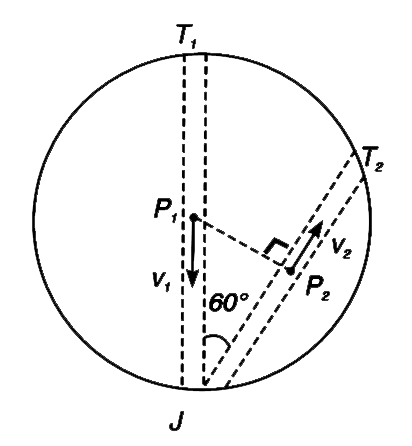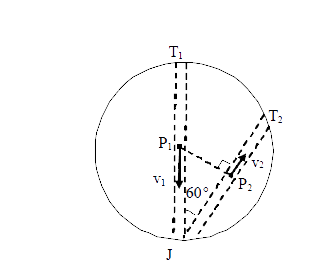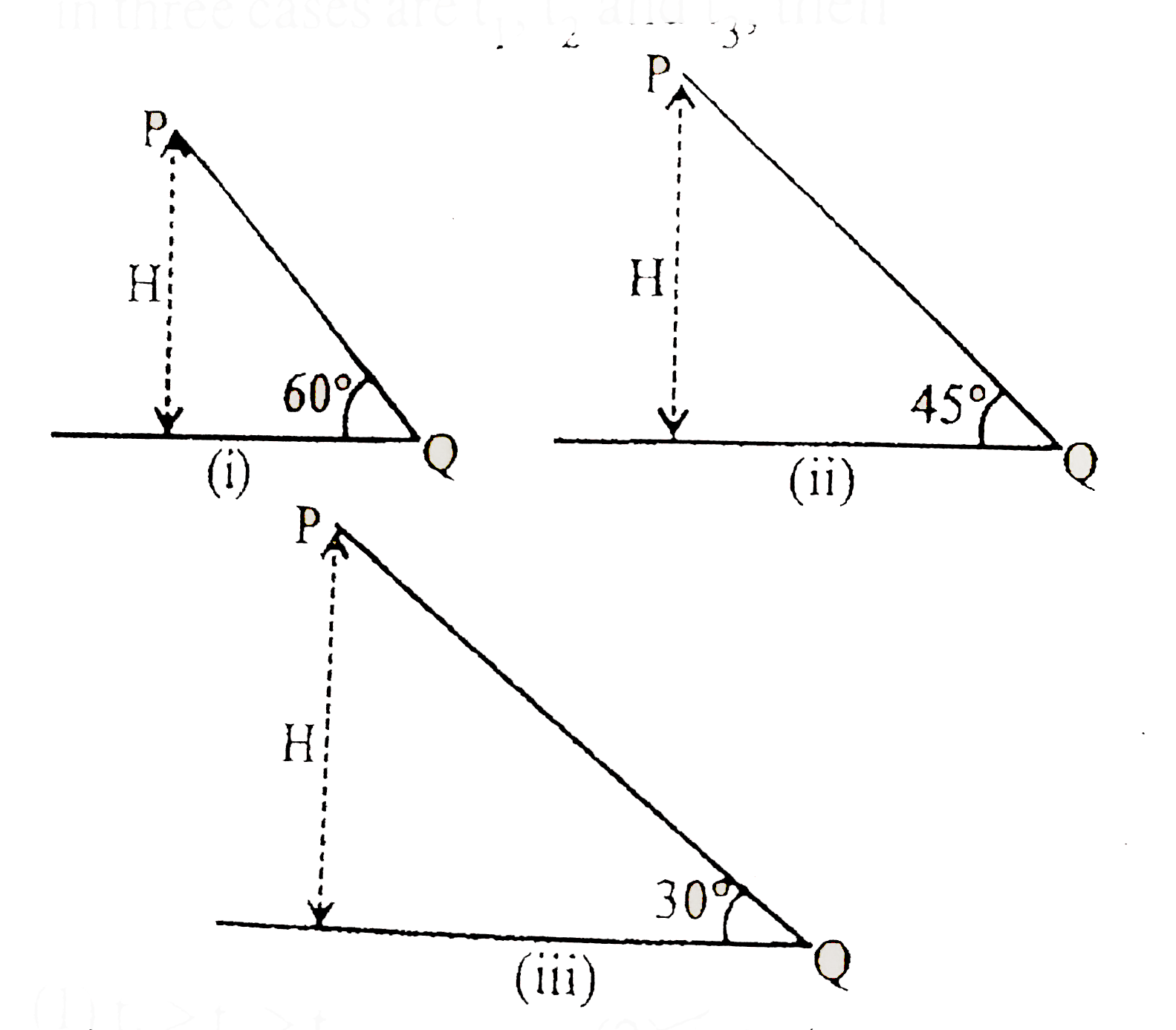Two tunnels - T1 and T2 are dug across the earth as shown in figure. One end of the two tunnels have a common meeting point on the surface of the earth. Two particles P1 and P2 are oscillating from one end to the other end of the tunnels. At some instant particles are at mid point of their tunnels as shown in figure. Then -

(a) Write phase difference between the particle P1 and P2. Can the two particles ever meet?
(b) Write the ratio of maximum velocity of particle P1 and P2.
The correct Answer is:(a) 180∘,No (b)2:1
Step by step video, text & image solution for Two tunnels - T_(1) " and " T_(2) are dug across the earth as shown in figure. One end of the two tunnels have a common meeting point on the surface of the earth. Two particles P_(1) " and " P_(2) are oscillating from one end to the other end of the tunnels. At some instant particles are at mid point of their tunnels as shown in figure. Then - (a) Write phase difference between the particle P_(1) " and " P_(2). Can the two particles ever meet? (b) Write the ratio of maximum velocity of particle P_(1) " and " P_(2). by Physics experts to help you in doubts & scoring excellent marks in Class 11 exams.
Updated on:21/07/2023Topper's Solved these Questions
- SIMPLE HARMONIC MOTIONBOOK - ARIHANTCHAPTER - SIMPLE HARMONIC MOTIONEXERCISE - Level 3
9 Videos
- SIMPLE HARMONIC MOTIONBOOK - ARIHANTCHAPTER - SIMPLE HARMONIC MOTIONEXERCISE - Level 3
9 Videos
- ROTATIONAL MOTIONBOOK - ARIHANTCHAPTER - ROTATIONAL MOTIONEXERCISE - PHYSICS
159 Videos
- SURFACE TENSIONBOOK - ARIHANTCHAPTER - SURFACE TENSIONEXERCISE - Surface tension
33 Videos
Similar Questions
Two tunnels are dug across the earth as shown in figure. Two particles P1 and P2 are oscillating from one end to the other of tunnel T1 and T2 respectively. At some instant particles are at position shown in figure. Then

View Solutiona narrow tunnel is dug along the diameter of the earth, and a particle of mass m0 is placed at R2 distance from the centre. Find the escape speed of the particle from that place.

View Solution
Knowledge Check
A tunnel has been dug through the centre of the earth and a ball is released in it. It will reach the other end of the tunnel after
A84.6 minB42.3 minC1 dayDWill not reach the other endTwo smooth tunnels are dug from one side of earth's surface to the other side, one along a diameter are dropped from one end of each of the tunnels. Both time particles oscillate simple harmonically along the tunnels. Let T1 and T2 be the particle along the diameter and along the chord respectively. Then:
AT1=T2BT1>T2Cv1=v2Dv1>v2A tunnel has been dug through the centre of the Earth and a ball is released in it. It will reach the other end of the tunnel after about
Aone dayBone hourC42 minD84 min
Suppose a tunnel is dug along a diameter of the earth. A particle is dropped from a point a distance h directly above the tunnel. The motion of the particle as seen from the earth is
View SolutionA tunnel is dug along a diameter of the earth. Find the force on a particle of mass m placed in the tunnel at a distance x from the centre.
View SolutionA tunnel is dug through the centre of the earth. Shwo that a body of mass m when dropped form rest from one end of the tunnel will execute simple harmonic motion.
View SolutionA tunnel ois dug along a chord of the earth a perpendicular distance R2 from the earth's centre. The wall of the tunnel may be assumed to be frictionless. Find the force exerted by the eall on a particle of mass m when it is at a distance x from the centre of the tunnel.
View SolutionA particle starts from rest from point P and follow a path PQ on the three smooth surfaces as shown in figures. If time taken by the particle in three cases are t1,t2 and t3 then

View Solution
